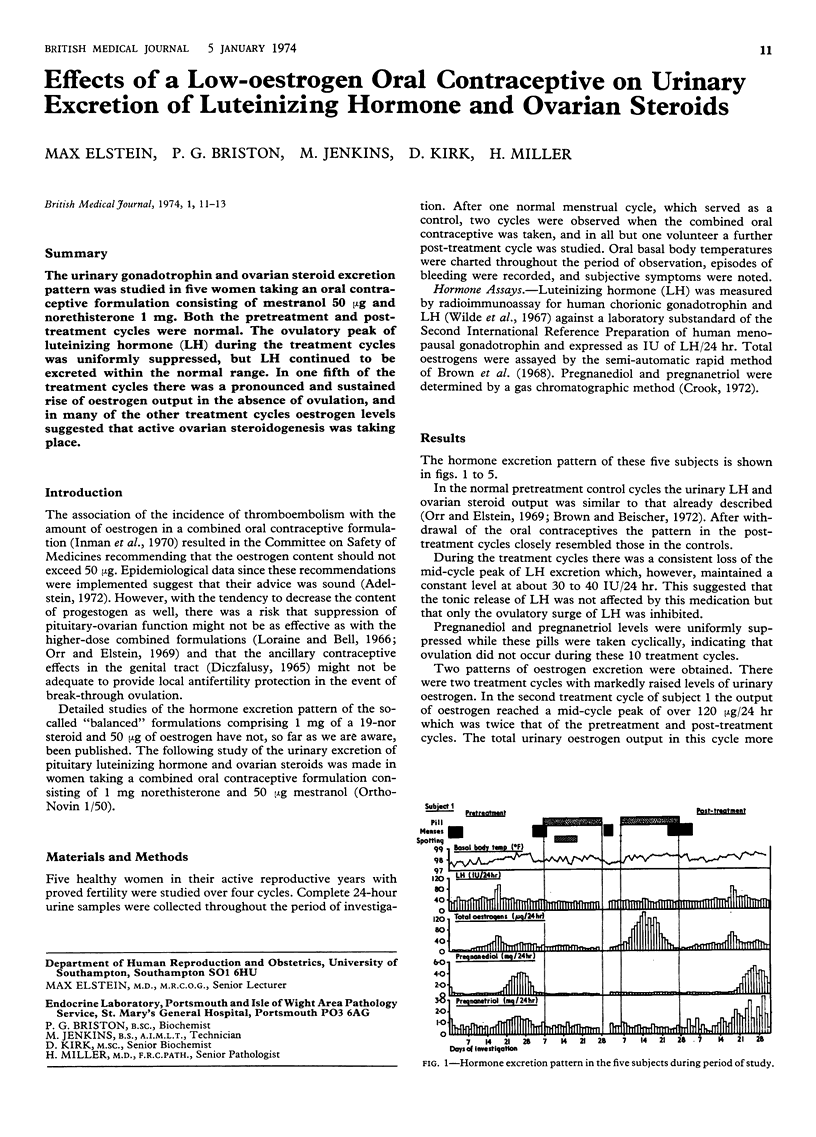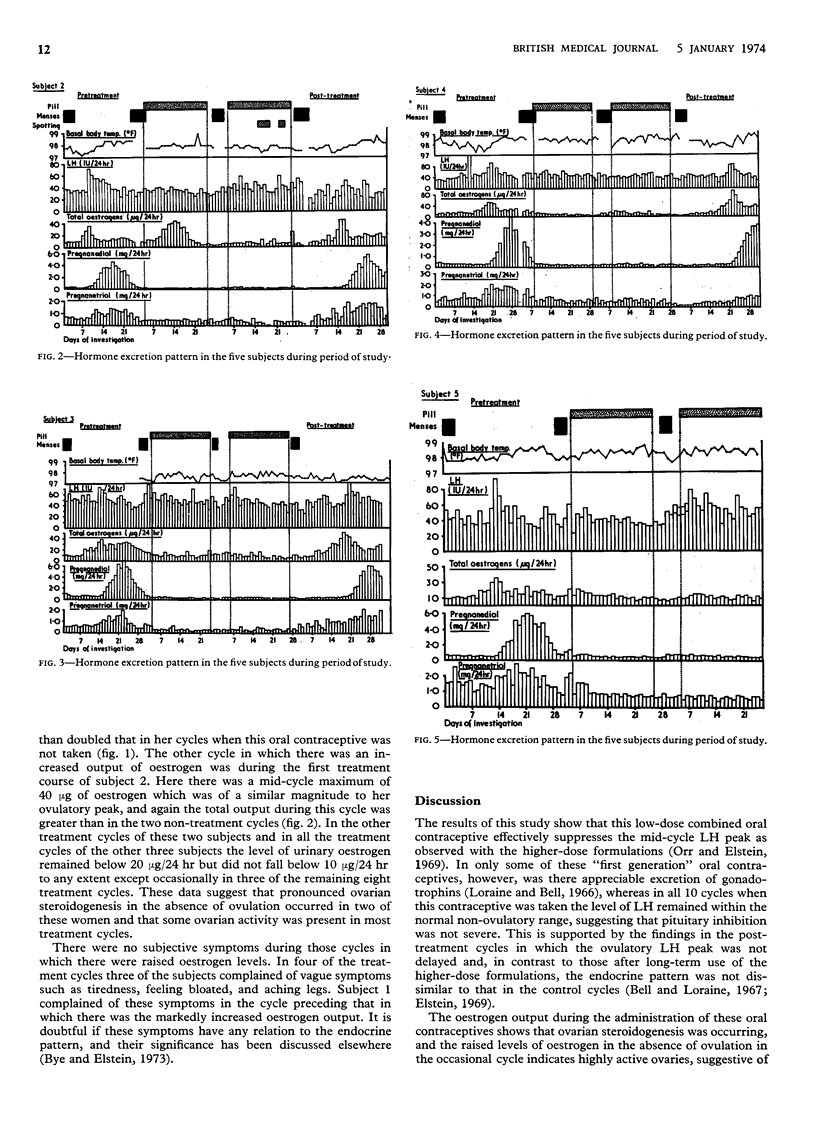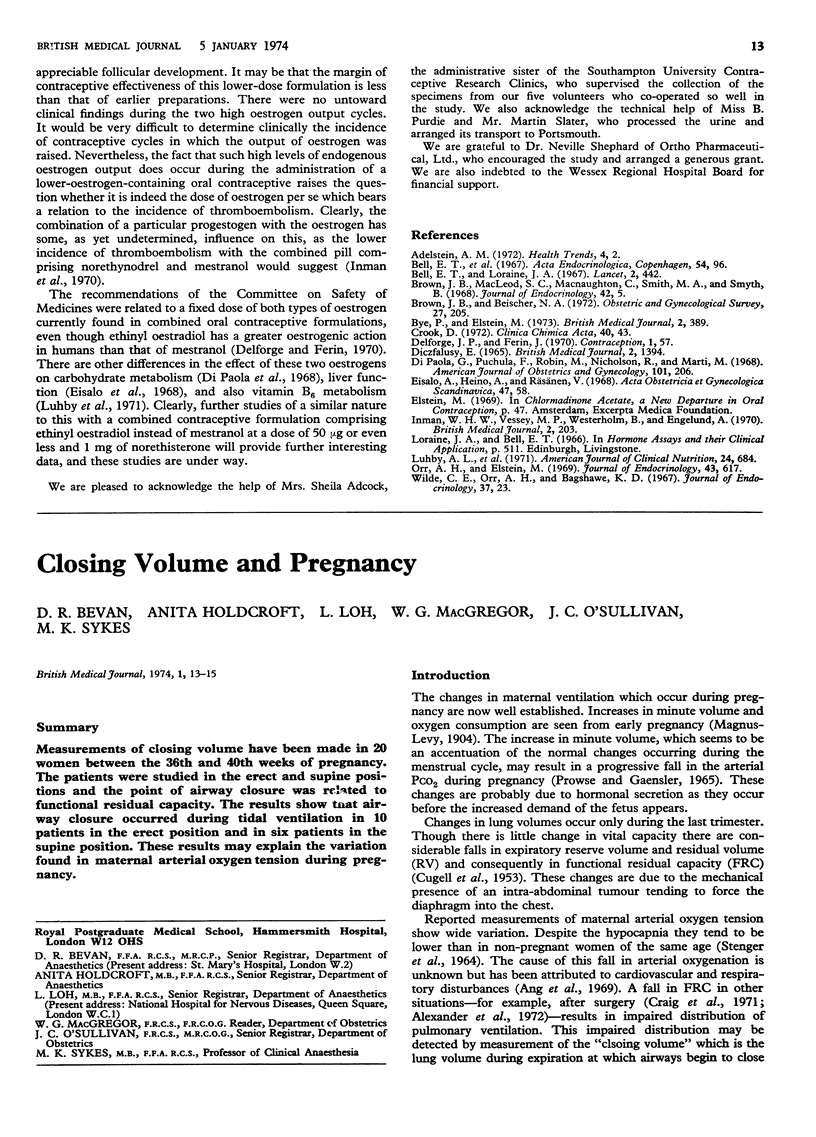Abstract
The urinary gonadotrophin and ovarian steroid excretion pattern was studied in five women taking an oral contraceptive formulation consisting of mestranol 50 μg and norethisterone 1 mg. Both the pretreatment and post-treatment cycles were normal. The ovulatory peak of luteinizing hormone (LH) during the treatment cycles was uniformly suppressed, but LH continued to be excreted within the normal range. In one fifth of the treatment cycles there was a pronounced and sustained rise of oestrogen output in the absence of ovulation, and in many of the other treatment cycles oestrogen levels suggested that active ovarian steroidogenesis was taking place.
Full text
PDF


Selected References
These references are in PubMed. This may not be the complete list of references from this article.
- Bell E. T., Loraine J. A. Urinary steroid and gonadotrophin excretion in women following long-term use of oral contraceptives. Lancet. 1967 Aug 26;2(7513):442–444. doi: 10.1016/s0140-6736(67)90855-0. [DOI] [PubMed] [Google Scholar]
- Brown J. B., Beischer N. A. Current status of estrogen assay in gynecology and obstetrics. I. Estrogen assays in gynecology and early pregnancy. Obstet Gynecol Surv. 1972 Apr;27(4):205–235. doi: 10.1097/00006254-197204000-00001. [DOI] [PubMed] [Google Scholar]
- Di Paola G., Puchulu F., Robin M., Nicholson R., Marti M. Oral contraceptives and carbohydrate metabolism. Am J Obstet Gynecol. 1968 May 15;101(2):206–216. doi: 10.1016/0002-9378(68)90189-0. [DOI] [PubMed] [Google Scholar]
- Diczfalusy E. Probable mode of action of oral contraceptives. Br Med J. 1965 Dec 11;2(5475):1394–1399. doi: 10.1136/bmj.2.5475.1394. [DOI] [PMC free article] [PubMed] [Google Scholar]
- Eisalo A., Heino A., Räsänen V. Oestrogen, proestogen and liver function tests. Acta Obstet Gynecol Scand. 1968;47(1):58–65. doi: 10.3109/00016346809157466. [DOI] [PubMed] [Google Scholar]
- Inman W. H., Vessey M. P., Westerholm B., Engelund A. Thromboembolic disease and the steroidal content of oral contraceptives. A report to the Committee on Safety of Drugs. Br Med J. 1970 Apr 25;2(5703):203–209. doi: 10.1136/bmj.2.5703.203. [DOI] [PMC free article] [PubMed] [Google Scholar]
- Luhby A. L., Brin M., Gordon M., Davis P., Murphy M., Spiegel H. Vitamin B 6 metabolism in users of oral contraceptive agents. I. Abnormal urinary xanthurenic acid excretion and its correction by pyridoxine. Am J Clin Nutr. 1971 Jun;24(6):684–693. doi: 10.1093/ajcn/24.6.684. [DOI] [PubMed] [Google Scholar]
- Orr A. H., Elstein M. Luteinizing hormone levels in plasma and urine in women during normal menstrual cycles and in women taking combined contraceptives or chlormadinone acetate. J Endocrinol. 1969 Apr;43(4):617–624. doi: 10.1677/joe.0.0430617. [DOI] [PubMed] [Google Scholar]


